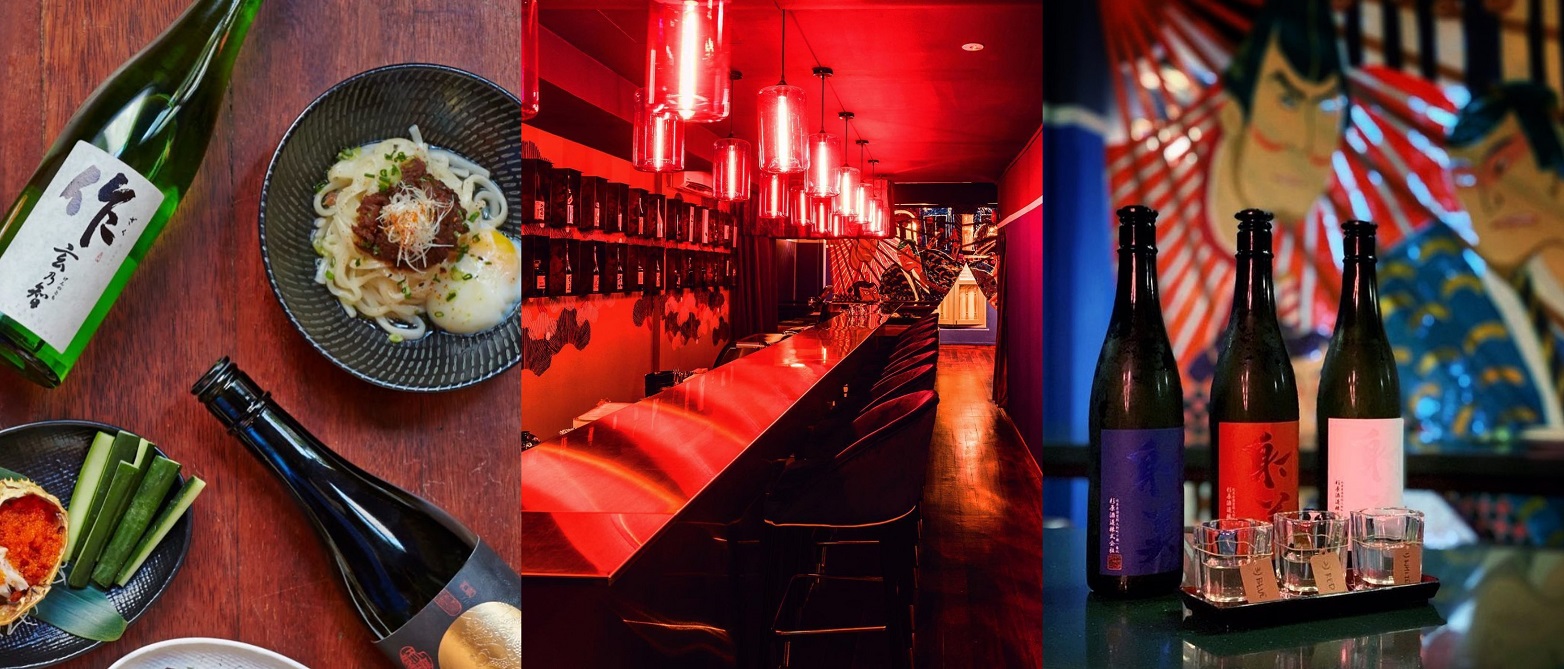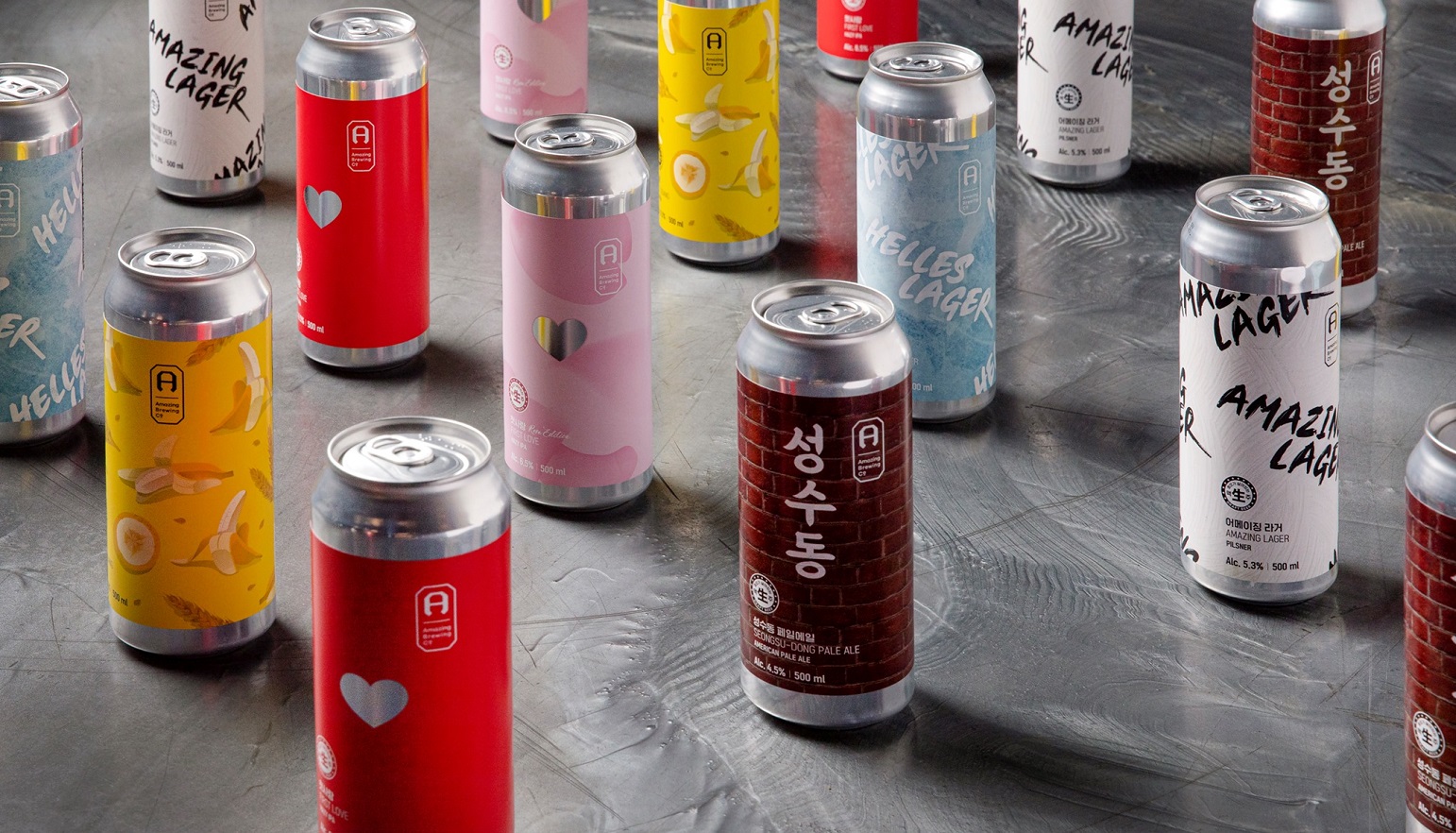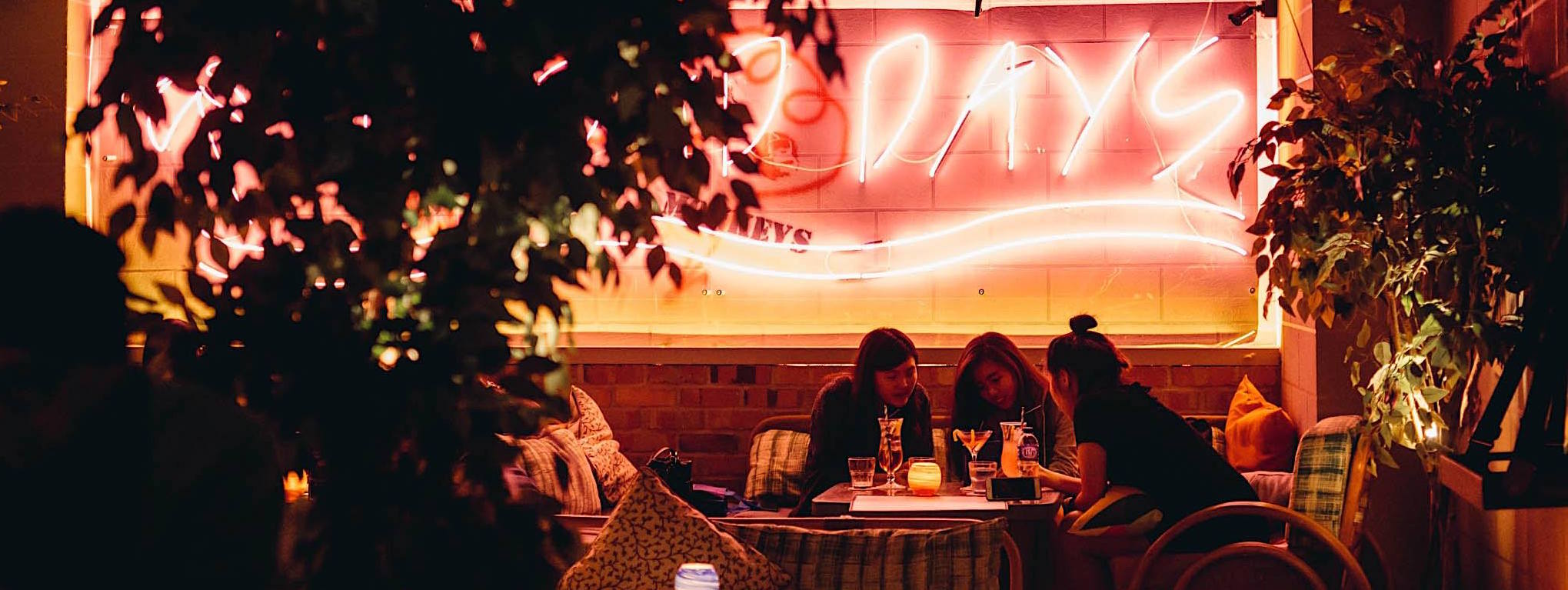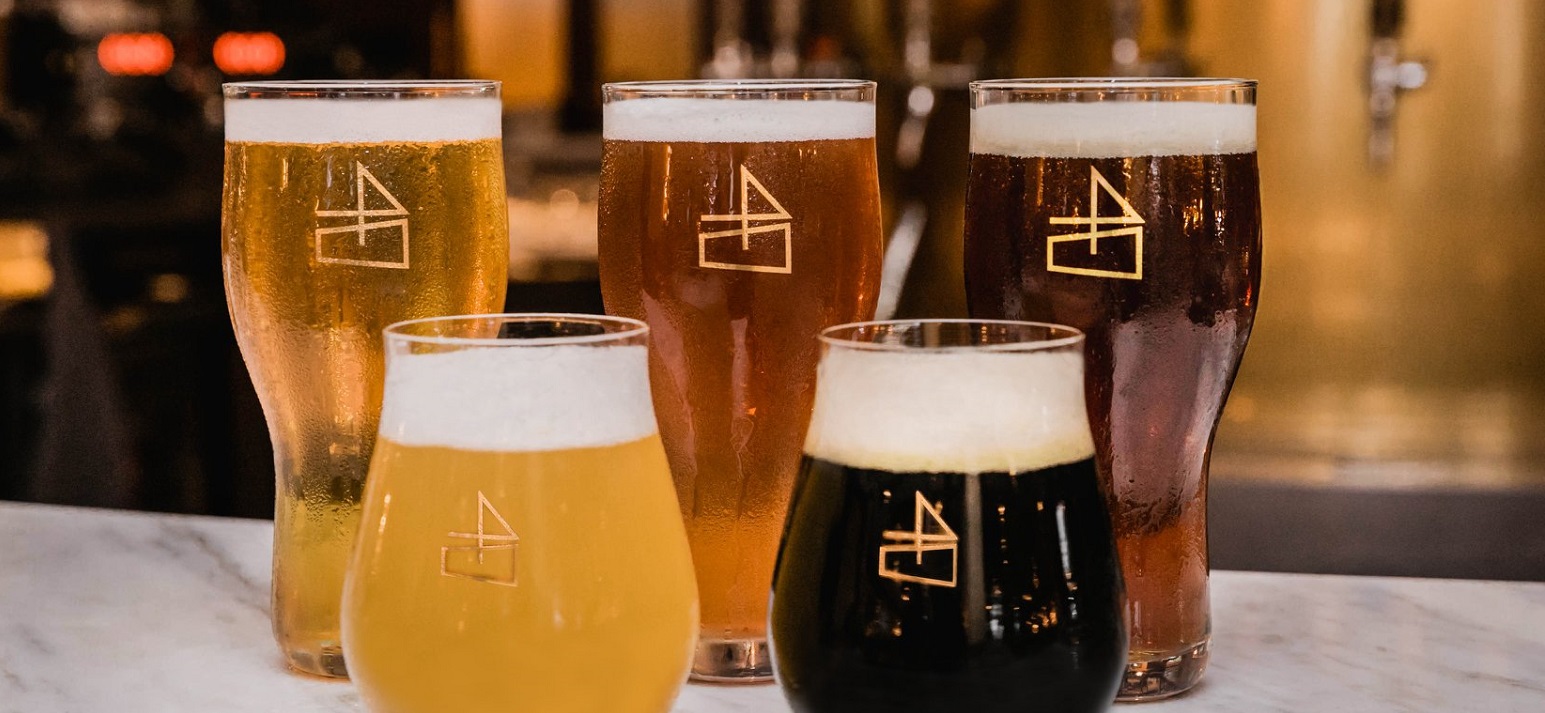It’s hard not to be seduced by the impressive showmanship, grace and care that go into making a fine tipple. Speaking of which, an exemplary bar in our book, Klee, closed its doors last week. We’ve been told they’re merely on the hunt for bigger and better digs, so let’s all hope they find them soon. As we mourn the (hopefully temporary) loss of one of our faves, we welcome the latest spot for drinks, Néktar. This promising newbie, just over a week old, has quickly established itself as a hidden gem. But we digress. What with Christmas and New Year just around the corner, we reckon this festive season is the perfect time to be hosting some cocktail parties. And you simply can’t do that without at least a few tricks up your sleeve, to complement the others you’ve undoubtedly perfected. We assembled an expert panel of local and visiting mixologists and convinced them to share some trade secrets so that, from now on, you can step behind the bar with confidence.
Our panel of experts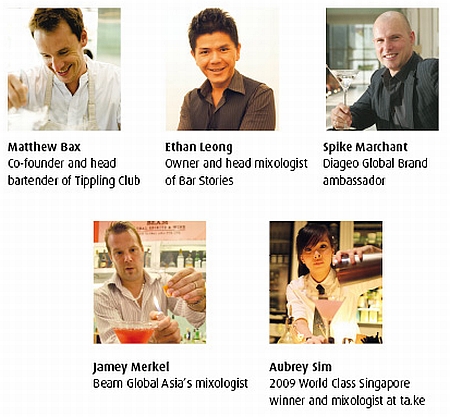
The Gear
Any self-respecting mixologist will tell you pretty much the same thing: You’ve got to have a good set of tools if you want to make a halfway decent drink. To get you started, the first thing you need is a cocktail shaker. “This comes in a variety of shapes, sizes and designs. One that is very versatile would be the Boston shaker set, comprising of two parts: The Boston mixing glass and the shaker tin. This allows you to make almost all types of cocktails,” advises Sim. She goes on, “With that, you would need a Hawthorn strainer, which fits into the shaker tin, to separate the ice from the cocktail after you are done shaking.” There’s also a three part shaker, which is a tad easier to use if you’re a novice.
Another essential is a measuring jigger (either double or single), “Pharmaceutical ones are neat as they have more options than the standard 15/30ml,” quips Bax. Other items include a long handled bar spoon, muddler, knife and chopping board. Some non-essentials, but also good to have, are appropriate glasses (cocktail, tall, lowball or highball), citrus press, hand-press juicer and squeeze bottles. So we’ve told you what to buy, now all you need to do is pick them up. Sim swears by the wonders of online shopping to stock her bag of tricks, but if you can’t wait, Bax, who usually sources his equipment from Japan, Germany and USA, recommends popping by Sia Huat (9 Temple St., 6223-1732) for some nifty gadgetry. Merkel suggests a WMF bar set (from $199) at Robinsons (#05-05, The Centrepoint 176 Orchard Rd., 6733-0888), which is functional and looks impressive.
Read about cocktails myths, debunked
The Booze
This is where it gets really fun, for us anyway. Truth is, when you have five mixologists and dare to ask them about their favored alcohol, the list becomes a long one very quickly. We streamlined it as best we could, so this is not an exhaustive one by any means. “Use good quality alcohol as a start. I find vodka provides a manageable hangover the next day,” reveals Merkel. After years of binge drinking, we can certainly attest to that fact.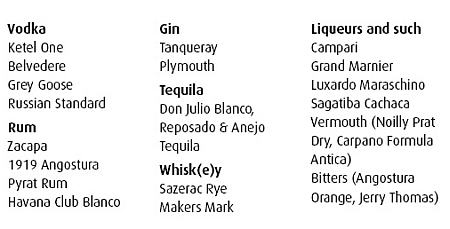
The Other Ingredients
Merkel feels that “the quality of your ingredients is a big factor. Fresh is always best. Fruits, juices, even ice.” Our panel favors citrus fruits such as limes, lemons and oranges, and who are we to argue.
Do what Leong does and go to different markets or organic stores (Four Seasons Organic Market, #B2-06/07 Great World City, 1 Kim Seng Promenade, 6836-1855, has a particularly good selection). “With all the great fruit in Singapore, you’d be nuts not to make lots of muddled fresh drinks at home or for your parties,” says Bax. Look at fresh herbs such as basil, rosemary, thyme, mint and juniper berries and fruits that are in season. “Fresh fruits and juices are better than syrups and liqueurs. Try seedless purple grapes, the darker the better. The exception is when the flavors in question are mild, then you need to boost and enhance those flavors,” adds Leong. Don’t be afraid to play around with herbs and even spices such as cloves, cinnamon, cardamom or black pepper.
Another important factor in successful cocktail making is sugar. “Sugar is key. It’s important because it does a couple of things. It helps to deliver flavor, heighten things. It can also integrate different components in a cocktail. But often you need to be restrained about that as different cultures and people have different sensitivities to sweetness,” says Marchant.
Although many people overlook ice as an underrated ingredient, ice is vital. “Make sure your ice is cold and neutral. Ice is porous, so it absorbs the smells and flavors of what it’s surrounded by. Buy bags of ice instead of trying to make it at home, especially for a big party. The more ice you have, the colder it stays. After all, ice keeps ice cold,” says Merkel.
Learn how to make cocktails from the pros
The Process
You don’t need us to tell you how important the process really is, and that’s also the consensus with our panel. “If you ask any bartender, the one thing they’ll keep coming back to is balance, balance and balance,” asserts Marchant. Sim is inclined to agree, “Get the proportions right. The key to good taste is balance, and that goes hand in hand with proper measurements and quantities.” Marchant suggests a great way to perfecting technique and get experience is to “Practice with a shaker and ice. Just get used to the sound. It’s what you’re listening to. You’ll hear when the ice cubes start to break down. Try not to over shake, you don’t want it to get too watery as it will dilute the drink.” He expounds further, “It’s all about levels of dilution and air. When you’re stirring you don’t introduce any air into the drink, when you shake, the introduction of air changes the texture and helps to incorporate separate elements.” If in doubt, a basic rule to follow is if it’s just mostly spirits and liquers, just stir; while if juices are involved, you’re probably better of shaking.
While the thought of making cocktails at home can seem daunting, particularly if you’re throwing a party for a large group, don’t be intimidated. “Just plan ahead and make sure you have everything you need. Preparation and organization is vital. Then just go ahead and do it, be a little out of your comfort zone,” advises Merkel. “You have to balance the different elements of sweet, sour and creamy to get the right touch. Everyone’s tastebuds are different, the most important thing is you enjoy it.
Ask yourself if you’d drink it, if not, don’t serve it. It’s all about how you play around with the recipe,” adds Leong. While mixing is also about pushing boundaries and experimenting with different flavor combinations, some warn against going overboard. To punctuate his point, Bax quotes Mies van der Rohe: Less is (often) more. “I think a good rule is to make sure you can taste each component of the drink, if you can’t taste it, then don’t add it.” Marchant stands firm, “I would strongly advise you to just have fun and be creative. It’s not like it’s heart surgery, nobody’s going to die if you get it wrong.” We couldn’t agree more.
Find out where our experts (and we) head to for cocktails
Tricks from the Pros
We wouldn’t let our panel go, however, without first demanding that they share some of their most hard-won knowledge. The kind of insight that could make us really pass for a pro. Here’s what they had to say:
- Shake your sours and other drinks that contain egg white first without ice, then add ice and shake again, you will get a much better foamy head and consistency. Matthew Bax
- Match the temperature of your drink to the glass you’re about to serve it in. If it’s going to be a cold one, chill the glass in the fridge or throw some ice cubes in a glass and chuck them out before straining the drink into it. If your drink’s hot, warm the glass a little. Jamey Merkel
- When making martini style cocktails, be sure to keep everything chilled. Keep your spirits in the fridge, and always keep vermouth in there as well (don’t forget it’s wine-based). Spike Marchant
- Always taste with a straw as you go. Even bartenders are adjusting all the time, as should you. Ethan Leong
The Next Step
Follow our panel’s advice and you’ll be a better cocktail maker than ever before. But you (and we) will still have a long way to go, and to get there our experts recommend really immersing yourself in the culture. And what better way than with a good book (you remember those, don’t you)?
Two of the best to get you going are Dale DeGroff’s The Craft of the Cocktail ($56) and The Joy of Mixology by Gary Regan ($54.95). They cover all the basics with tools, techniques and recipes. Our go to would be the former, an impressively comprehensive guide with 500 recipes alone (try mixing, and drinking, your way through them all!). As an alternative, Merkel feels strongly that “The web is an amazing resource. Get on YouTube, they’ve got some good demos.”
You can order The Craft of the Cocktail from Books Kinokuniya (#03-09/10/15 Ngee Ann City, 391 Orchard Rd., 6737-5021) and The Joy of Mixology from Borders (#01-00 Wheelock Place, 501 Orchard Rd., 6235-7146). Both books are also available at Amazon.com. We reckon they’d make good Christmas gifts (no one needs to know that you’re getting them for yourself). Now get out there and start shaking things up!
Myths debunked
- Does the order in which you add the ingredients really matter? It’s just an old, ergonomic rule of thumb to start with the less expensive products first, just in case you mess up the drink. The one caveat that it really does matter when layering a cocktail, or building one, such as a mojito.
- How about techniques such as stirring versus shaking? The stirring of a martini is a traditional bartender’s ritual, and it has long been viewed as the more elegant, old-fashioned way of serving a martini. Really, it depends on the drink but stirring requires much more skill (according to recent scientific studies).
- Pouring Champagne down a bar spoon doesn’t help to save the fizz.
- Shaking a martini doesn’t bruise gin.
- Putting in water and ice doesn’t chill a glass faster than just plain ice.
- Not all martinis are created equal. Classic Martinis are a duo of gin and vermouth, while a combination of gin, vermouth and vodka, James Bond’s Vesper Martini, is a vodka martini. These days, anything that’s served in a cocktail glass, aka martini glass, is loosely named a martini. [TOP]
- Coffee Bar K, #01-076 UE Square, 205 River Valley Rd., 6720-5040.
- Cut, Galleria Level, B/1 The Shoppes at Marina Bay Sands, 2 Bayfront Ave., 6688-8517.
- martini bar @ mezza9, Mezzanine Level, Grand Hyatt Singapore, 10 Scotts Rd., 6738-1234.
- Orgo, Roof terrace 4/F Esplanade––Theatres on The Bay, 1 Esplanade Drive, 6336-9366.
- Bar Stories, 2/F, 57A Haji Lane, 6298-0838.
- Néktar, Annex Bldg., 31 Scotts Rd., 6836-9185.
- ta.ke, 2/F Studio M Hotel, 3 Nanson Rd., 6808-8888.
- Tippling Club, 8D Dempsey Rd., 6475-2217 [TOP]


